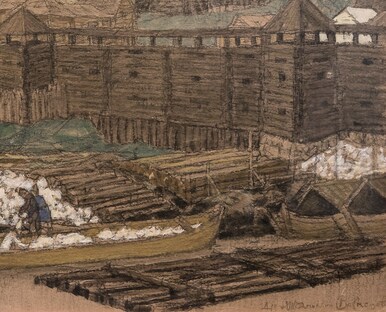The 19th century was characterized by the extensive development of the animalier genre in European and Russian sculpture. This can be attributed to the achievements in the field of natural history. Romanticism with its keen interest in forces of nature created the conditions for works dedicated to animals.
Sculptors widely explored the animalier genre, varying their choice of both subject and material, for example, cast iron.
Unlike small-size artistic castings made of bronze, those made of cast iron are not so elaborate and detailed. Since cast iron is a more refractory and dense material, it does not fill the mold easily and is more difficult to chase. As a rule, a mold intended for casting bronze statuettes is not suitable for cast iron as is, so it must be processed in a certain way by a sculptor or molder. Cast iron endows products with new qualities, such as greater plasticity, flowing forms and a distinctive black color of the surface.
Many Russian regions were known to produce art castings from cast iron but the Urals could boast the highest level of quality.
Artistic cast iron products, produced in the 19th — the first third of the 20th century at different Russian metallurgical plants, including the Kasli and Kusa plants, enjoyed great popularity.
The composition “A Tethered Horse” belongs to the animalier sculpture genre and portrays a horse in motion. This young, untamed horse — a graceful creature in sculpture — is the embodiment of strength and incredible energy.
The sculptor masterfully captured the fleeting moment in the horse’s behavior — getting frightened and jerking as a natural response to fear. In just one second, the horse will have reared. The sculptor conveyed the tension in the horse’s half-bent hind legs, the push of its front legs and the characteristic movement of the head up and to the side. The slanting board fence complements the composition as an element of genre painting.
The figurine is notable for its balanced proportions, complete composition and clear, precise lines.



